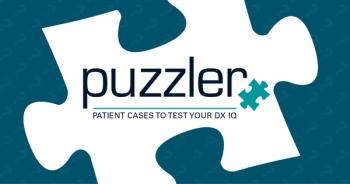
Many adolescents with major depressive episode do not receive mental health care
Less than half of US adolescents with major depressive episode received treatment in 2022, with disparities by race, gender, and geography.
Adolescent depression continues to pose a substantial public health concern in the United States. According to data from the 2022 National Survey on Drug Use and Health, nearly 1 in 5 adolescents aged 12 to 17 years (19.2%) experienced a major depressive episode (MDE) in the previous year. The prevalence of depression in adolescents has risen steadily since 2009, with an increase following the COVID-19 pandemic. Depression beginning in adolescence is often associated with greater long-term social, educational, and health consequences compared with depression that develops later in life.1,2
Treatment patterns and service utilization
In a study published August 20, 2025, in PLOS Mental Health, researchers analyzed survey responses from 11,969 adolescents, of whom 2,283 met the criteria for MDE. Among those with MDE, 47.5% reported receiving any form of treatment in the past year. Service utilization patterns included 39.1% receiving care from a specialist clinician, 30.5% obtaining school-based mental health services, 25.0% receiving prescription medication, and 34.5% using telehealth for mental health care.
The study found notable differences in treatment utilization by sociodemographic factors. Adolescents in rural or nonmetropolitan areas had significantly lower odds of receiving specialist care than peers in metropolitan areas (adjusted odds ratio [AOR], 0.64; 95% CI, 0.47-0.87). Age also influenced patterns of use, with older adolescents less likely to use school-based services than their younger counterparts (AOR, 0.52; 95% CI, 0.38-0.71).
Racial and gender disparities
The researchers reported that female adolescents were more likely than male adolescents to receive any mental health treatment (AOR, 1.59; 95% CI, 1.11-2.28). In contrast, Black adolescents had significantly lower odds of receiving treatment compared with non-Hispanic White adolescents (AOR, 0.36; 95% CI, 0.22-0.59).
When examining care types, Black adolescents were less likely to utilize school-based services (AOR, 0.31; 95% CI, 0.17-0.55) and less likely to receive specialist treatment (AOR, 0.41; 95% CI, 0.24-0.69) compared with White adolescents. Asian and Hispanic adolescents also had lower odds of receiving treatment compared with their White peers.
Influence of insurance and socioeconomic factors
Insurance status was strongly associated with service use. Adolescents with private or public insurance had significantly higher odds of utilizing telehealth and prescription medication than those without coverage. For example, privately insured adolescents had more than 3-fold greater odds of receiving telehealth services than uninsured peers (AOR, 3.31; 95% CI, 1.22-8.98).
Household income, however, was not found to significantly affect specialist or school-based service utilization, although adolescents from households above 200% of the federal poverty level had higher telehealth use compared with peers from lower-income households.
Public health implications
The authors emphasized that the observed disparities highlight inequities in mental health care access. “Addressing the disparities in mental health treatment revealed by this study is crucial for ensuring a more inclusive and equitable mental health support system for all adolescents,” they stated in the news release.
The study’s findings underscore the ongoing challenges in ensuring equitable access to mental health care for adolescents. Geographic location, race, and insurance status continue to play significant roles in whether adolescents receive treatment. Expanding culturally competent care, improving rural access to mental health professionals, and ensuring broader insurance coverage may help reduce these gaps.
Conclusion
Fewer than half of US adolescents with MDE received treatment in 2022. Despite increased awareness of adolescent mental health needs, disparities persist by geography, race, gender, and insurance coverage. These findings indicate that policy interventions and clinical strategies must address both structural and cultural barriers to improve care access and equity for adolescents experiencing depression.
References:
- Few depressed teens getting treatment, study finds. News release. PLOS. August 20, 2025. Accessed August 25, 2025. https://www.eurekalert.org/news-releases/1095061
- Tan SC, Hunt K, Shelton B. Disparities in mental health service utilization among adolescents with depression: results from a 2022 US National Survey. PLOS Ment Health. 2025;2(8):e0000388.
https://doi.org/10.1371/journal.pmen.0000388
Newsletter
Access practical, evidence-based guidance to support better care for our youngest patients. Join our email list for the latest clinical updates.







